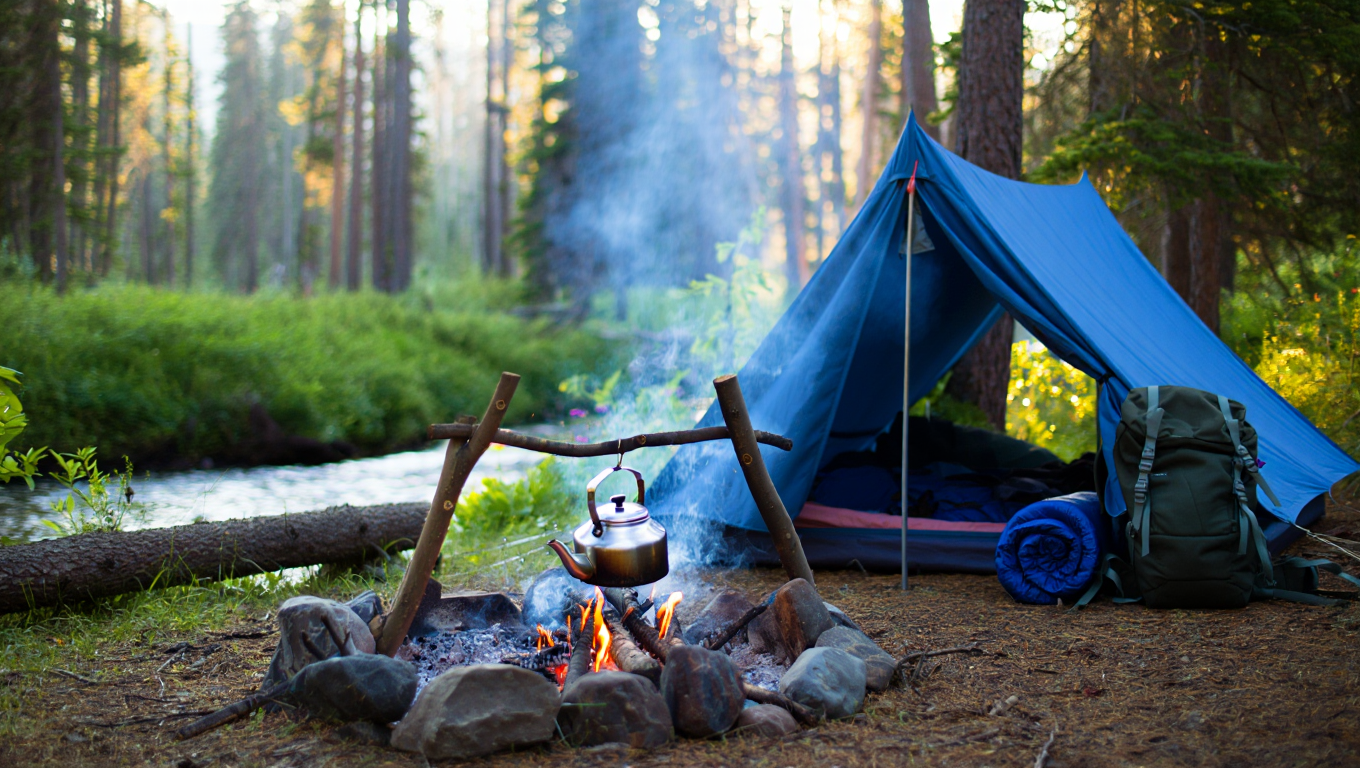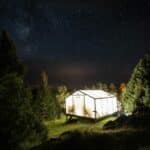🔥 Introduction
Packing for a camping trip has always been a game of trade-offs: comfort vs. weight, convenience vs. space. But with the surge in smart outdoor design, today’s compact camping gadgets let you do more with less — and without sacrificing reliability.
Still, not all “lightweight gear” is created equal. Some products sound great in theory but fall short when put to the test. That’s why we’ve gone beyond product specs and marketing blurbs. This guide is based on real user experience, crowd feedback, and performance in actual outdoor conditions.
Whether you’re a weekend camper, a thru-hiker, or someone who just wants to travel lighter without losing the essentials, these 7 gadgets deliver high utility in small packages — and have the field-tested feedback to back them up.
Let’s dive into what’s worth packing in 2025 — and what isn’t.
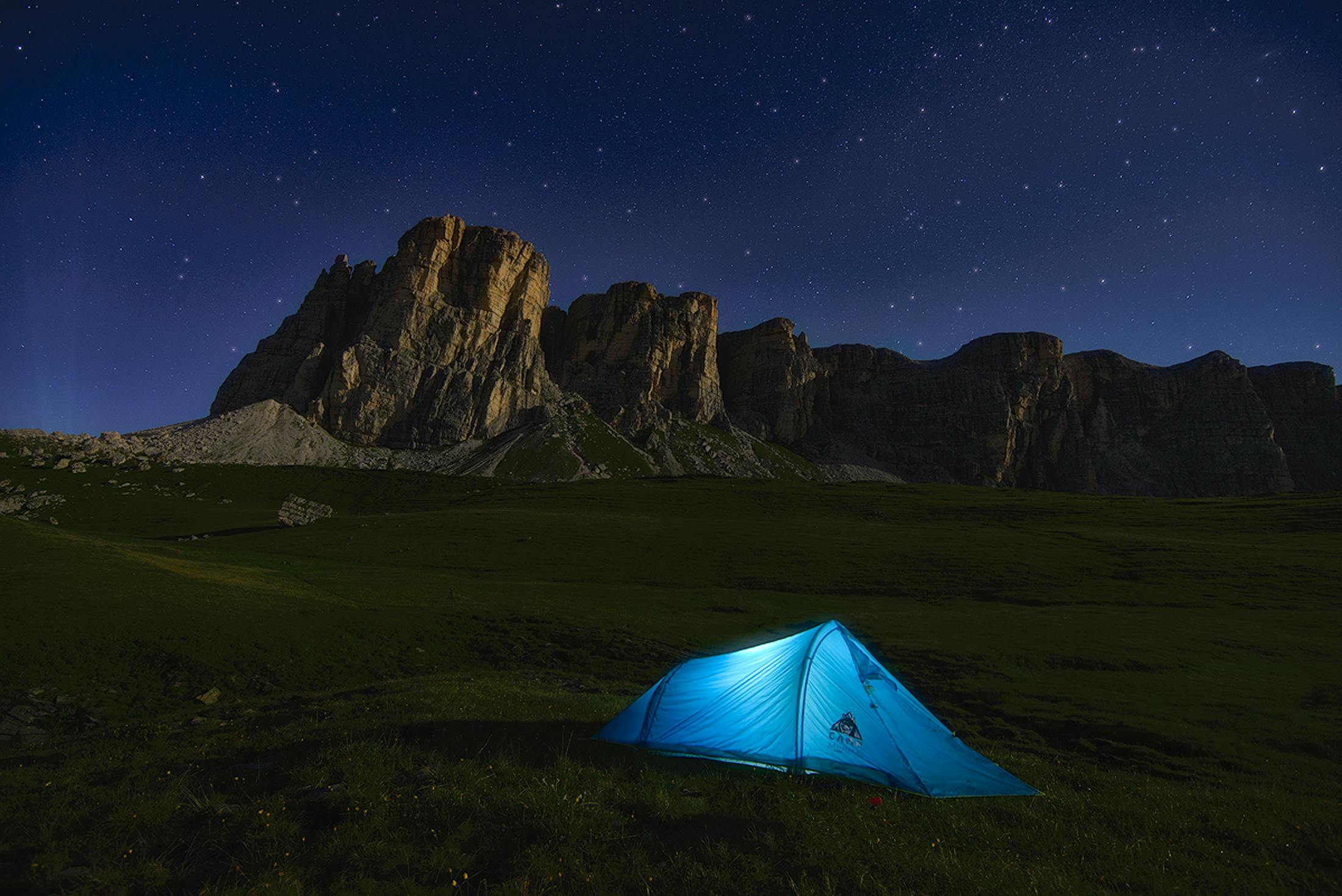
🧭 Quick Overview: 7 Compact Camping Gadgets for 2025
| Gadget | Best For | Pros | Cons |
|---|---|---|---|
| Garmin inReach Mini 2 | Off-grid communication | Lightweight, SOS, satellite texting | Pricey, subscription required |
| Leatherman Signal Multi-Tool | All-in-one survival tool | 19 tools, fire starter, rugged | Slightly heavy, not ultralight |
| BioLite AlpenGlow 500 Lantern | Campsite lighting + ambiance | Multi-mode, long battery, USB out | More expensive, not pocket-sized |
| NEMO Fillo Elite Pillow | Comfortable sleep on the go | Compact, ergonomic, washable | Not ideal for side sleepers |
| MSR PocketRocket Deluxe Stove | Fast, efficient cooking | Lightweight, fast boil, reliable | Needs fuel canister, no windscreen |
| Vargo Titanium Spork | Eating with minimal weight | Ultralight, strong, non-rusting | Short handle, basic design |
| Anker PowerCore 10000 Redux | Charging devices in the wild | Compact, fast charging, trusted | No solar, limited to USB devices |
🧰 How to Choose Compact Camping Gear That Actually Works
How to ChooGoing compact doesn’t mean going unprepared. The best lightweight gear is designed to save space without cutting corners on quality, safety, or comfort. But choosing the right tools isn’t always obvious—especially with so many flashy gadgets on the market.
Here’s how to pick items that truly earn their place in your pack, according to experienced campers and thousands of reviews.
1. Balance Weight with Functionality
Saving ounces is great—until it comes at the cost of reliability. Many ultralight gadgets look good on paper but don’t hold up in the field. Real users often highlight the importance of choosing tools that do their job consistently, even if they weigh a bit more.
Look for:
- Strong materials (titanium, ripstop nylon, aircraft-grade aluminum)
- Gear tested for durability, not just weight
2. Packability Matters More Than You Think
Compact gear isn’t just about size—it’s about how easily it fits into your existing setup. According to campers, one of the most frustrating things is a gadget that technically fits, but only if you rearrange your whole pack.
Look for:
- Foldable or nesting designs
- Flat-pack shapes that slide into any pocket or corner
- Storage sacks or built-in clips
3. Power Flexibility = Peace of Mind
For anything electronic—lamps, GPS, battery packs—the power source can make or break your trip. Reviews repeatedly mention the need for flexible charging options. Campers prefer gear that works with standard batteries, USB-C, or solar—even better if it supports multiple modes.
Look for:
- Dual charging (USB + solar or AA backup)
- Battery indicators and auto-shutoff modes
- Fast-charging capability for short power windows
4. Multi-Use = Maximum Value
Why carry three tools when one can do it all? Campers often favor gear that serves multiple functions without added complexity. A lantern that also charges your phone, or a stove that folds into a cup-sized container, earns extra space in any pack.
Look for:
- Gadgets with dual-purpose design (e.g. chair + dry bag)
- Modular setups (tools that work together or interchange)
- Real feedback from users who’ve used them in multiple ways
5. Durability in the Wild
It’s not just about how gear performs out of the box—it’s about how it holds up after a dozen trips. The most common user complaint? “Worked great for a week, then broke.” Real-life stress tests are the best benchmark for camping gear, especially in wet, windy, or freezing conditions.
Look for:
- Long-term reviews, not just first impressions
- Warranty or replacement programs
- Community-tested brands with a reputation for lasting products
🛰 Garmin inReach Mini 2 — Tiny Device, Big Safety Net
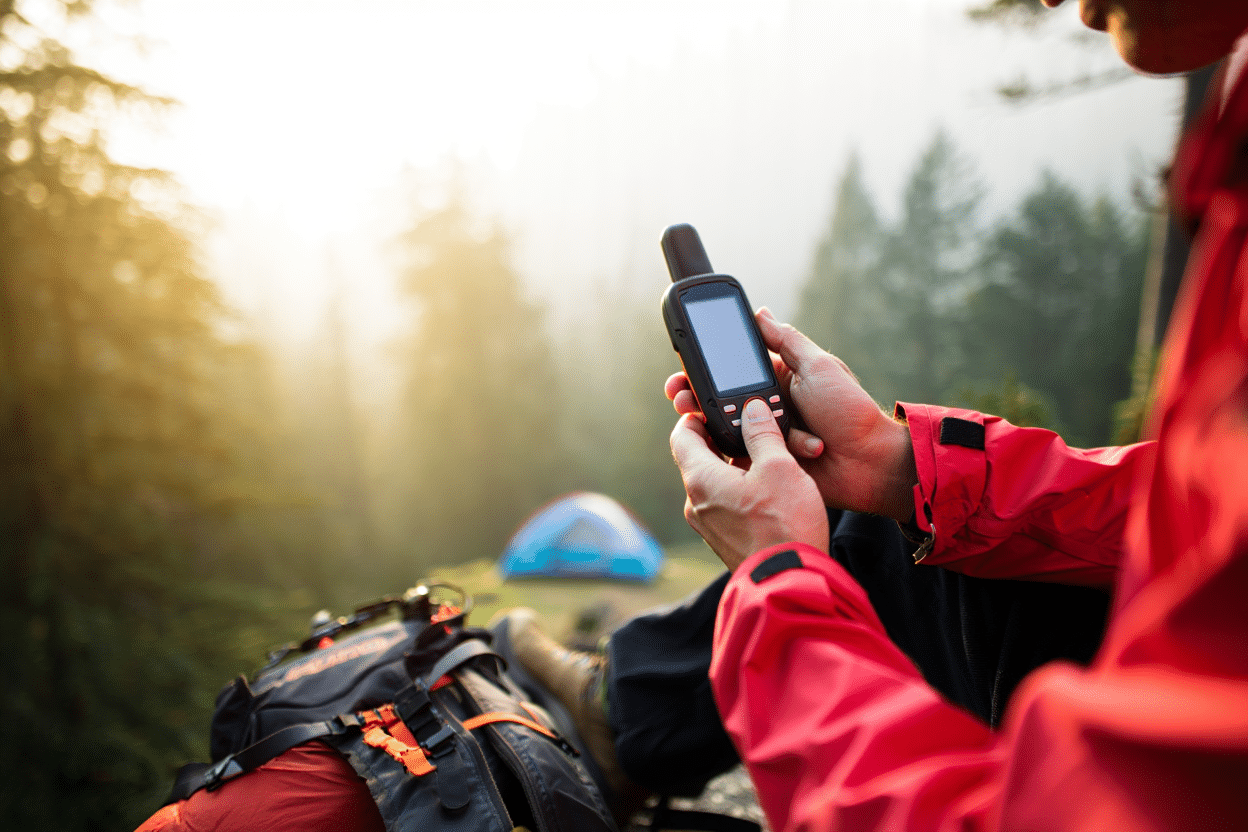
Overview
When you’re camping far from cell service, having a way to stay in touch can mean the difference between peace of mind and a serious problem. The Garmin inReach Mini 2 is a compact satellite communicator that allows you to send and receive messages, share your location, and trigger an SOS if needed — no matter where you are.
Why It Stands Out
Weighing just 3.5 ounces, this device fits in the palm of your hand yet connects to a global satellite network. It’s a go-to for hikers and backpackers who value staying connected, especially in remote areas where phone signals disappear.
Key Features
- Two-way satellite texting and location sharing
- Dedicated SOS button with 24/7 emergency monitoring
- Long battery life (up to 14 days in tracking mode)
- Basic GPS navigation and weather forecasts
- Syncs with your phone via Bluetooth for easier typing
User Insights
Many reviewers say this gadget is one of those items you hope never to use — but are really glad to have. Campers highlight how reassuring it is to let family follow their progress or send a quick “I’m okay” from the trail. The battery life is often praised for lasting multi-day trips without a charge.
Some downsides do come up: the interface is basic, and composing a message using the small buttons can be tedious. Most users recommend syncing it with a phone app for easier texting. Also, you’ll need a subscription plan to unlock full functionality, which adds to the cost over time.
Pros
- Ultra-light and pocket-sized
- Works anywhere, even without cell service
- Trusted SOS and tracking features
- Long-lasting battery in real-world use
Cons
- Requires monthly subscription
- Text input on-device is clunky without a phone
- Price may be steep for casual campers
Best For
- Solo hikers, backcountry travelers, or anyone going off-grid
- Campers with safety or communication concerns
- People who want family or friends to track their progress
Bottom Line
If you venture into areas where cell phones fail, the inReach Mini 2 is more than a gadget — it’s a lifeline. It’s not cheap, but the peace of mind it offers makes it a worthwhile investment for serious adventurers.
🛠 Leatherman Signal — One Tool to Rule the Campsite
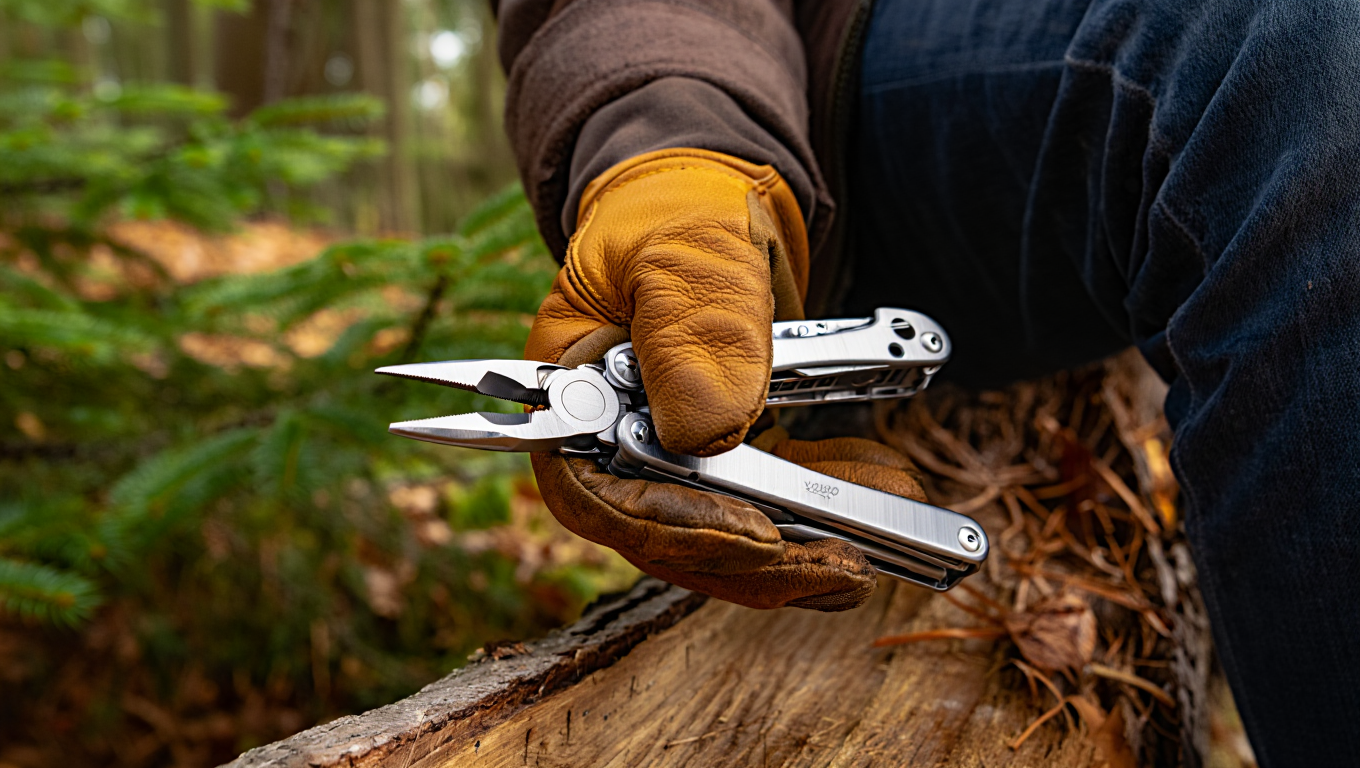
Overview
A good multi-tool can replace half the gear in your pack — and the Leatherman Signal was built with that idea in mind. It combines classic Leatherman functionality with smart features for outdoor survival, all in a foldable tool that fits in your pocket.
Why It Stands Out
While many multi-tools are designed for general use, the Signal adds camping-specific features like a fire starter, whistle, and diamond-coated sharpener. It’s tailored for the outdoors, not just your garage drawer.
Key Features
- 19 integrated tools including pliers, saw, knife, and hammer
- Ferrocerium rod for fire-starting
- Emergency whistle built into the carabiner
- Diamond-coated sharpener for on-the-go blade maintenance
- Rugged stainless-steel construction
User Insights
Campers often praise the Signal for saving space while covering all the basics — and then some. The fire-starting rod gets special mention for its usefulness in damp conditions. Several hikers noted they were able to get a campfire going when matches or lighters failed. The tool’s built-in whistle is appreciated as a safety backup, especially on solo hikes.
That said, a few reviewers felt the tool was heavier than expected for minimalist setups, and some mentioned that a few of the tools (like the hammer surface) take practice to use effectively. But overall, most users agreed the build quality justifies the size and weight.
Pros
- Combines daily tools with outdoor-specific features
- Strong, durable, and weather-resistant
- Fire starter and whistle make it great for emergencies
Cons
- Not ultralight — bulkier than basic multi-tools
- Some tools have a learning curve (e.g. hammer, sharpener)
- On the pricier side for casual campers
Best For
- Hikers and campers who want a do-it-all tool
- People who pack light but don’t want to be unprepared
- Outdoor enthusiasts who value durability over minimalism
Bottom Line
The Signal isn’t the smallest or cheapest multi-tool, but it earns its keep. With survival-focused extras and proven reliability, it’s the kind of item you’ll use often — and be grateful for when things don’t go as planned.
🔦 BioLite AlpenGlow 500 — A Lantern That Sets the Mood
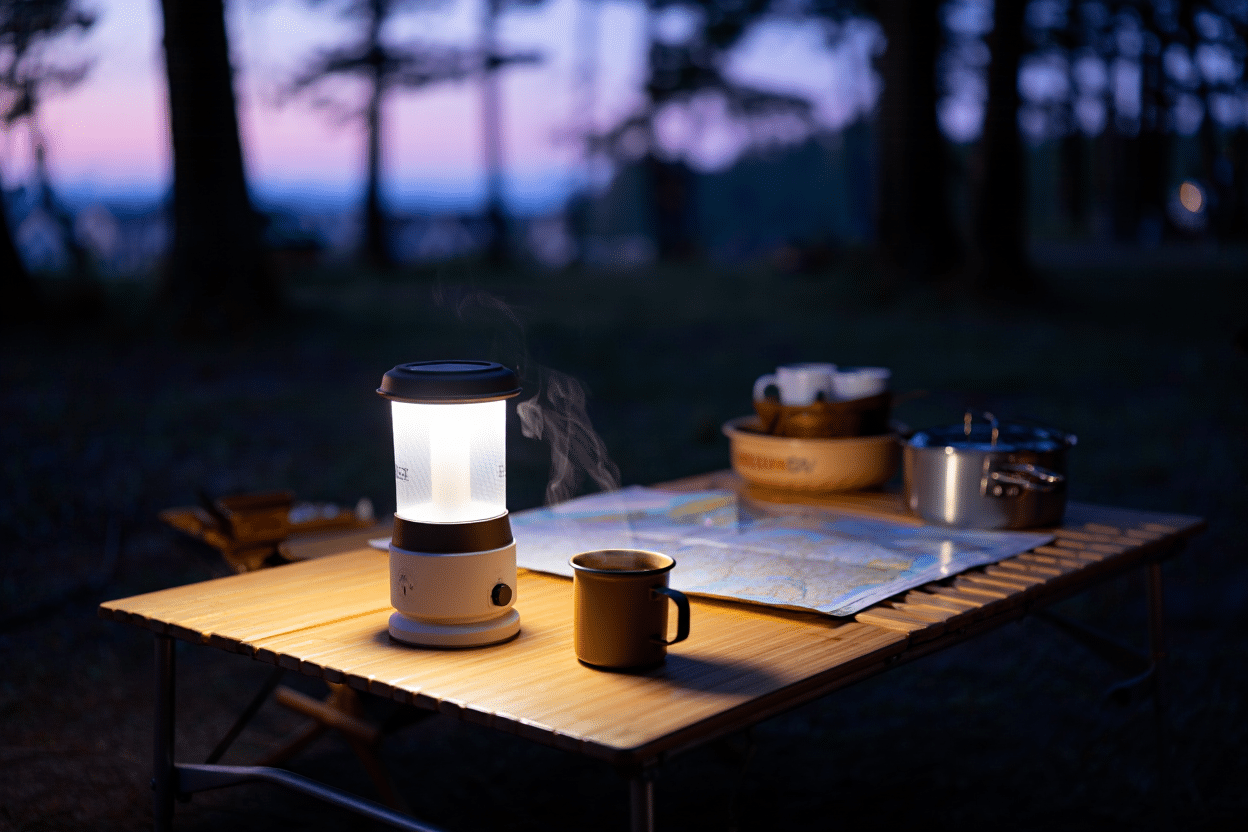
Overview
When the sun sets at your campsite, lighting does more than help you see — it sets the tone for the night. The BioLite AlpenGlow 500 is a compact, rechargeable lantern that blends brightness with ambiance, offering multiple color modes and enough juice to power your phone in a pinch.
Why It Stands Out
Most camping lanterns fall into two categories: too bright and clinical, or too dim and useless. This one hits the sweet spot. It’s designed not just to light the space, but to make it feel cozy — with warm tones, color cycling, and a natural glow that won’t blind you in the dark.
Key Features
- 500-lumen output with multiple brightness levels
- Warm white, cool white, and multicolor modes
- USB-rechargeable 6400mAh battery
- Can charge phones and small devices
- Water-resistant and impact-resistant design
User Insights
Campers consistently mention how much they enjoy using this lantern — which isn’t something people often say about gear. Many highlight the soft, diffused light as ideal for setting up camp or winding down before bed. Others say it makes a noticeable difference in how “homey” the tent feels.
The multicolor modes are often used for socializing or keeping kids entertained. Several users noted it held up to drops, light rain, and several nights of continuous use without needing a charge. On the flip side, some find it a bit bulky for ultralight travel, and a few mention it’s pricier than basic lanterns — but still worth it for the versatility.
Pros
- Great light quality with warm and cool modes
- Long-lasting battery life
- Can double as a phone charger
- Durable build with weather protection
Cons
- Heavier than basic lanterns
- Premium price for casual campers
- No solar or AA battery backup
Best For
- Campers who want atmosphere, not just illumination
- Small groups, families, or solo travelers who enjoy comfort
- People who want their lighting gear to serve double duty
Bottom Line
The AlpenGlow 500 isn’t your typical harsh camping lantern — it’s a thoughtful, high-quality light that creates comfort as well as visibility. If your idea of a great night includes relaxing under the stars without staring into a floodlight, this one’s for you.
💤 NEMO Fillo Elite Pillow — Small Pillow, Big Difference
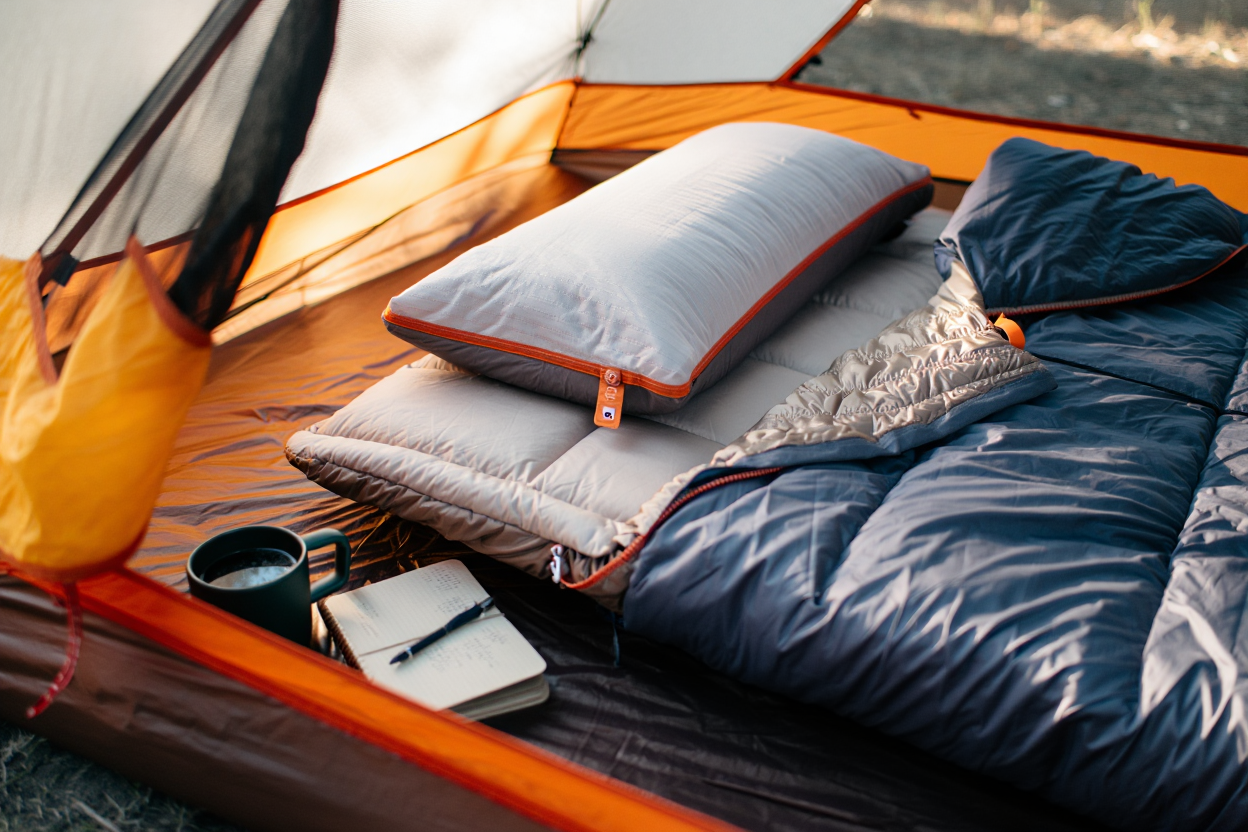
Overview
Sleep is everything on the trail. And while it’s tempting to think a rolled-up hoodie will do the job, most campers who’ve tried the NEMO Fillo Elite agree: once you bring a real pillow, there’s no going back. Lightweight, inflatable, and surprisingly supportive, this compact pillow adds serious comfort without taking up precious pack space.
Why It Stands Out
It’s not just air. The Fillo Elite combines an inflatable air chamber with a thin layer of soft foam and a machine-washable cover, giving it a feel that’s much closer to a real pillow than the crinkly plastic camping ones people often regret packing.
Key Features
- Weighs just 3 ounces and packs down smaller than a potato
- Inflatable core with a layer of foam for added comfort
- Removable, washable cover
- Integrated stuff sack built into the cover
- Quick inflation and deflation valve
User Insights
Campers often describe this pillow as a “game-changer” for backcountry comfort. Many note that it stays in place better than expected, especially when paired with a sleeping pad. Hikers praise its low weight-to-comfort ratio — small enough to justify carrying even on long treks.
That said, not everyone finds it perfect: a few side sleepers mention it’s not quite high enough for full neck support, and some say the fabric can feel slippery on certain sleeping surfaces. Still, most reviewers agree it beats improvising with balled-up gear.
Pros
- Ultra-light and highly packable
- Comfortable mix of foam and air
- Machine washable cover
- More supportive than typical inflatable pillows
Cons
- Might feel too low for side sleepers
- Slippery on some surfaces without grip
- Higher price than basic blow-up pillows
Best For
- Backpackers who want real sleep, not just rest
- Campers trying to upgrade comfort without bulk
- Anyone who’s tired of waking up with a stiff neck
Bottom Line
The NEMO Fillo Elite is one of those small upgrades that makes a big difference. It’s not essential in the survival sense — but if comfort matters to you on the trail, it’s worth every ounce.
🍲 MSR PocketRocket Deluxe — Fast Boil, Tiny Footprint
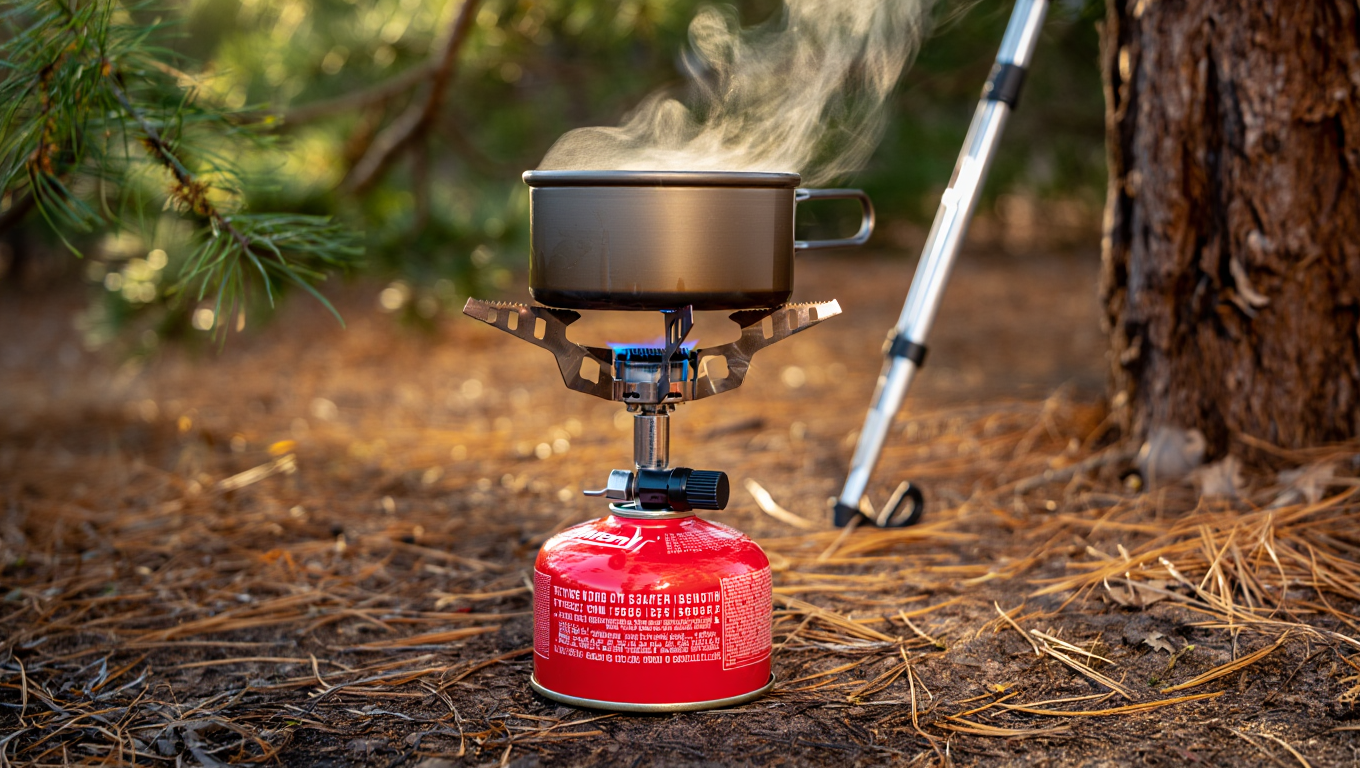
Overview
When you want hot food or coffee in the backcountry without carrying a full camp kitchen, a reliable stove becomes one of the most important items in your pack. The MSR PocketRocket Deluxe delivers exactly that — ultralight, compact, and powerful enough to boil water in minutes.
Why It Stands Out
Compared to cheaper backpacking stoves, the PocketRocket Deluxe is built with refinement in mind. It features a pressure regulator, which helps maintain consistent flame even in wind or cold — a detail that makes a big difference when cooking above the tree line or early in the morning.
Key Features
- Boils 1 liter of water in about 3.5 minutes
- Pressure regulator for steady output in variable conditions
- Push-start Piezo igniter (no lighter needed)
- Ultralight (2.9 oz) and folds into a small case
- Wide burner head for better heat distribution
User Insights
Many backpackers call this stove a “no-brainer upgrade” from entry-level models. They mention it performs reliably at elevation, in early spring, and during gusty conditions when others fail. The built-in igniter gets mixed reviews: some say it’s a lifesaver, others bring a backup just in case.
Several users highlight how little fuel it uses, even on longer trips — and how it’s fast enough to make hot meals feel effortless. It’s not the cheapest stove, but few regret the purchase once they’ve cooked on it.
Pros
- Super fast boil time
- Reliable in wind and colder temps
- Lightweight and compact
- Fuel-efficient for its power
Cons
- No integrated windscreen (may require DIY solution)
- Piezo igniter not 100% reliable in long term
- More expensive than budget stoves
Best For
- Ultralight hikers who still want a hot meal
- Campers cooking in variable weather
- Anyone upgrading from a basic canister stove
Bottom Line
The PocketRocket Deluxe lives up to its name: small in size, big on performance. If you want a stove that won’t slow you down but can still handle real-world conditions, this one earns its spot in any serious camper’s kit.
🍴 Vargo Titanium Spork — Ultralight, Unbreakable, Uncomplicated

Overview
When it comes to minimalist camping gear, few items are more iconic — or more personal — than your eating utensil. The Vargo Titanium Spork has built a loyal following thanks to its simplicity, strength, and almost nonexistent weight. It’s the kind of tool you forget you’re carrying… until you actually need it.
Why It Stands Out
At just 0.5 ounces, this spork is lighter than most disposable plasticware — but it’ll survive years of daily use. Unlike folding or hybrid utensils, there are no moving parts, no hinges to break, and no weird ergonomics. Just a single, ultra-tough piece of titanium with a polished finish that feels surprisingly refined.
Key Features
- Weighs 0.5 oz (14 g)
- Made from aerospace-grade titanium
- Polished bowl for smooth eating
- Matte handle for grip
- One-piece construction (no hinges, no fuss)
User Insights
Hikers and campers often say this is the only utensil they’ve used for years. It’s especially popular among long-distance trekkers and ultralight backpackers who weigh every item. Reviews consistently mention that the Vargo Spork feels sturdy and dependable, unlike flimsier plastic or aluminum alternatives.
Some users note the handle is a bit short for eating from freeze-dried meal bags (unless you don’t mind getting your fingers messy). A few minimalists also say they opted for a longer spoon later, but keep the Vargo for quick trips or as a backup.
Pros
- Nearly weightless
- Incredibly durable — won’t bend, rust, or melt
- Simple, effective design
- Feels more premium than most basic utensils
Cons
- Handle may be short for deep meal pouches
- No fork tines long enough for actual “forking”
- Not the cheapest spork on the market
Best For
- Ultralight hikers who count every gram
- Campers who want long-lasting gear
- Anyone tired of broken plastic cutlery
Bottom Line
The Vargo Titanium Spork is the definition of “buy it once, use it forever.” It won’t stir your soup and sauté your veggies — but it’ll get the job done, and you’ll barely notice it’s in your pack.
🔋 Anker PowerCore 10000 Redux — Power in Your Pocket
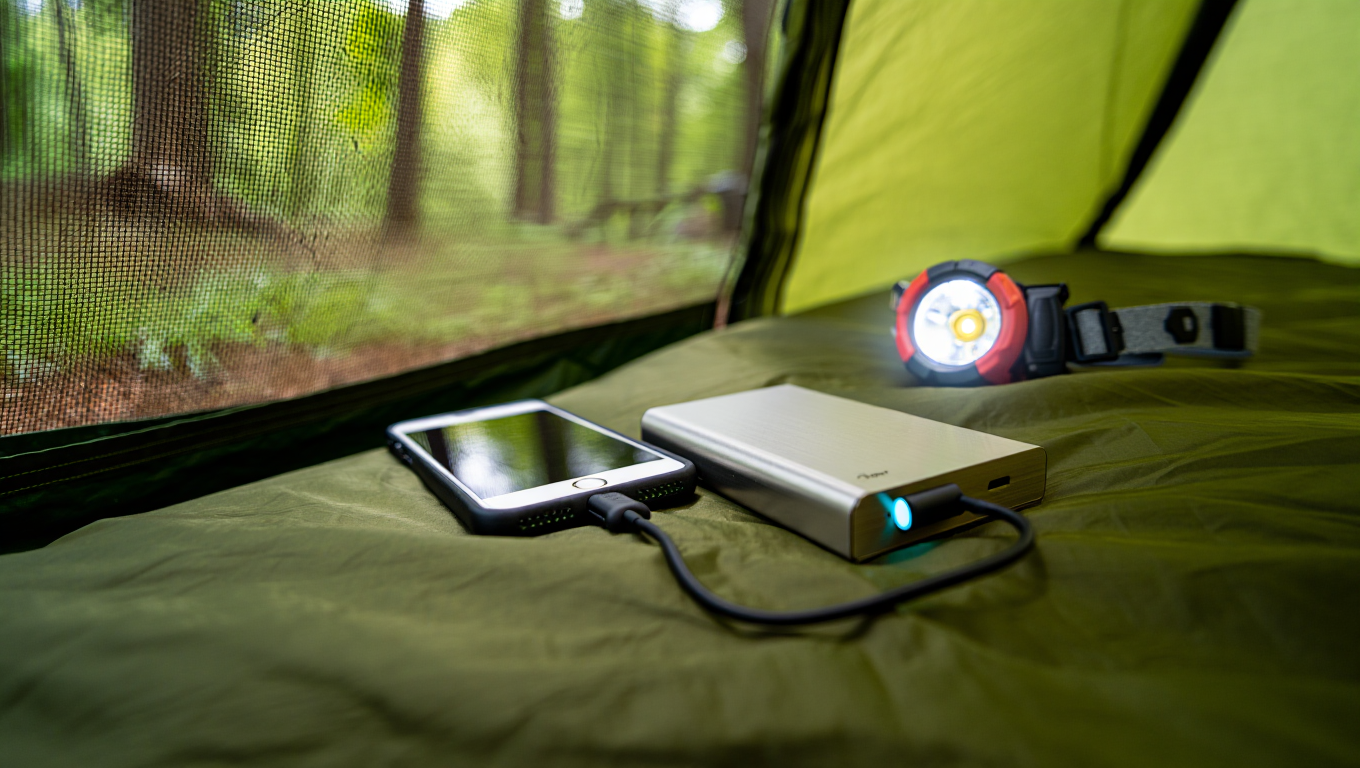
Overview
In the age of GPS, headlamps, cameras, and Bluetooth everything, a power bank isn’t a luxury — it’s survival gear. The Anker PowerCore 10000 Redux packs enough juice to charge your phone two or three times, yet it’s small enough to disappear in a side pocket.
Why It Stands Out
Many campers appreciate this model for one reason: reliability. It doesn’t have solar panels, wireless charging, or a flashlight — and that’s the point. It does one job, does it well, and keeps your essential electronics alive when you’re far from an outlet.
Key Features
- 10,000mAh capacity (2–3 full phone charges)
- Weighs around 6.5 oz (lighter than most phones)
- High-speed USB-A output with PowerIQ
- Compact, durable casing with anti-slip texture
- Charges via Micro-USB (not USB-C)
User Insights
Campers routinely describe this power bank as a “just right” option. It’s not overkill for weekend trips, but not underpowered either. Reviewers highlight its consistent performance, even after dozens of charging cycles, and say it holds its charge for weeks when stored.
Some users mention they wish it had USB-C or a built-in cable, but many prefer its simplicity and durability over fancier models. Its ruggedness and small form factor make it especially popular among minimalist and budget-conscious campers.
Pros
- Lightweight and truly pocket-sized
- Enough capacity for multiple charges
- Durable, no-nonsense design
- Trusted brand with good support
Cons
- No solar, wireless, or USB-C features
- Micro-USB input is dated by 2025 standards
- Not ideal for heavy electronics users on long trips
Best For
- Campers who need a backup power source for phones or headlamps
- Short- to mid-length trips without access to outlets
- Travelers who want something dependable and compact
Bottom Line
The PowerCore 10000 Redux is proof that simple is smart. It won’t charge a laptop or power your camp fridge — but it will keep your phone alive, your GPS running, and your lights on when it matters most.
🧼 Maintenance Tips: How to Make Your Gear Last
Camping gear takes a beating — between dirt, moisture, heat, and rough handling, even high-end gadgets can wear out fast. But with a little regular care, your compact tools can last for years. Here’s how to keep them in trail-ready shape.
Keep Batteries Alive
Charge power banks fully before storing them, and top them off every couple of months if unused. Extreme heat or freezing temps? Avoid them — they shorten battery life fast. For devices with built-in cells, many campers recommend storing them at ~50% charge for longevity.
Clean After Every Trip
Whether it’s a lantern, spork, or stove, wiping off dust, grease, and moisture goes a long way. Most small items don’t need deep cleaning — just a damp cloth and dry towel will do. For anything that comes into contact with food (like cookware or utensils), a rinse with warm soapy water is enough.
Lubricate Moving Parts
Multi-tools and stoves can get sticky or stiff after a few outings. A tiny drop of food-safe oil or WD-40 (depending on the tool) keeps hinges, valves, and screw points moving smoothly. Just wipe off any excess before packing.
Store Smart
Pack gear only when it’s dry — even “water-resistant” items can grow mold or corrode over time. Use mesh bags or breathable sacks instead of airtight containers, especially for fabric-based gear like pillows or sleeping pads.
Check Before You Go
Multiple reviewers say their gear failed not in the wild — but on Day 1 of a trip. Always do a quick test: turn on your lantern, unfold your stove, check the charge on your communicator. It takes five minutes and could save a ruined weekend.
Bottom line: A few minutes of care at home can prevent hours of frustration on the trail. Treat your gear well, and it’ll return the favor — trip after trip.
✅ Conclusion: Small Gear, Big Impact
When you’re packing for your next camping trip, every ounce and every inch matters. The best compact gear doesn’t just save space — it works hard, lasts long, and makes your time outdoors smoother, safer, and more enjoyable.
From reliable lighting to emergency communication to a simple spoon that never bends, the right tools can turn a good trip into a great one.
These seven gadgets have earned their place in real campers’ packs — not just because they’re small, but because they deliver when it counts.
Have a favorite piece of compact gear we missed?
Share it in the comments — we’re always on the lookout for trail-tested tools worth adding to our kit.
⚠️ Mistakes to Avoid When Buying Compact Camping Gear
Even experienced campers fall into these traps when shopping for gear. Here’s how to avoid buyer’s remorse (and wasted pack space).
❌ 1. Buying “ultralight” without checking reviews
Just because something is labeled lightweight doesn’t mean it’s reliable. Always look for real-world user feedback — especially on durability and long-term use.
❌ 2. Choosing style over substance
Some gear looks great in product photos but doesn’t hold up on the trail. Avoid gimmicks and prioritize proven design and materials over flashy extras.
❌ 3. Ignoring how it packs
If it doesn’t pack flat or fold down easily, it may take up more space than you expect. Always check packed dimensions, not just weight.
❌ 4. Skipping compatibility checks
Whether it’s a stove, charger, or tool, make sure it works with the gear you already have — wrong cable? wrong fuel? wrong fit? Instant regret.
❌ 5. Not testing before the trip
You’d be surprised how many people pack something brand new, only to find it broken, awkward, or just wrong when they need it most. Test everything at home — even the “simple” stuff.
❓ FAQ: Compact Camping Gadgets
What makes a camping gadget “compact”?
In general, compact gear is designed to take up minimal space in your pack or pocket — either through folding, collapsing, or ultralight materials. True compact gear also balances size with real-world usability, not just specs.
Is lightweight gear always better?
Not always. Many ultralight products sacrifice durability or performance. The best compact gear strikes a balance between low weight and high reliability — especially when you’re far from backup options.
How much should I spend on compact gear?
It depends on your needs. If you camp often or go off-grid, investing in higher-quality items makes sense. For casual use, some budget gear performs surprisingly well — just check long-term user reviews before buying.
Can I use compact camping gear for other types of travel?
Absolutely. Most items on this list are great for road trips, international travel, festivals, or emergency kits. Their portability and multi-use design make them versatile beyond the campsite.
What’s one compact item you shouldn’t skip?
If we had to pick one: a power source or light. Whether it’s a power bank, lantern, or headlamp, having energy in the dark or when your phone dies can make or break your trip.

